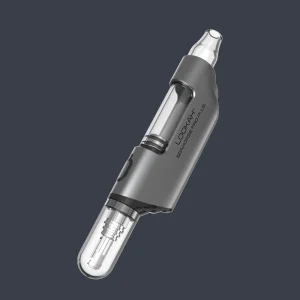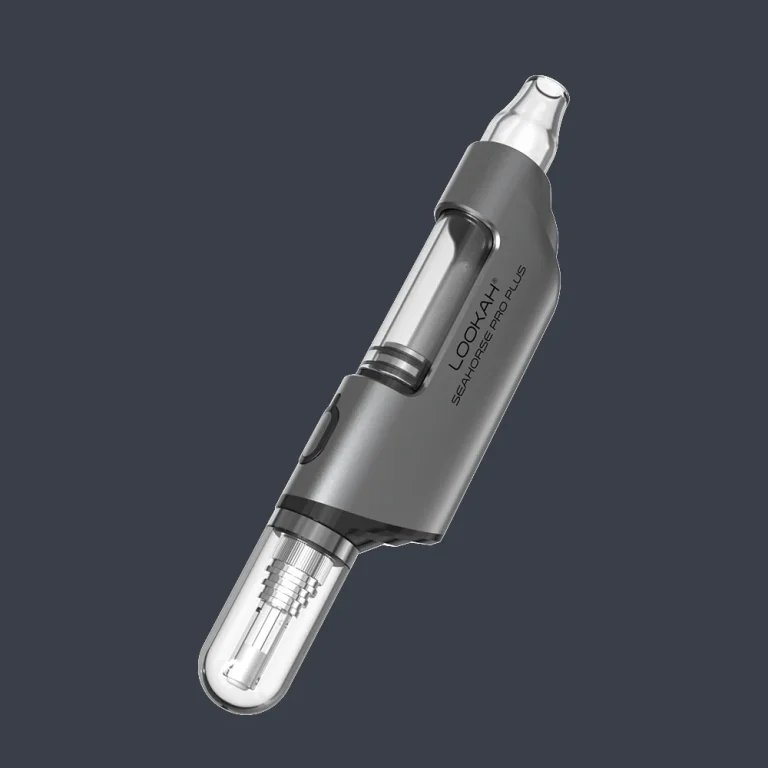Introduction to pgg369
The field of genetic research has rapidly evolved, driven by innovations in biotechnology. Among the myriad tools available today, pgg369 has emerged as a pivotal component for researchers exploring CRISPR methodologies and gene editing approaches. In this section, we delve into the essence of pgg369, its significance in the realm of genetic research, and how it is being utilized in various applications.
What is pgg369?
pgg369 refers to a specific plasmid, identified as Plasmid #165606 on Addgene, which has been extensively characterized and studied in laboratories around the globe. Developed from Dr. Marcus Noyes’s research, pgg369 contains the insert ω-1xFLAG-dCas9, providing scientists with a tool that can effectively modify gene expression.
Essentially, pgg369 is a part of the toolkit used for CRISPR technology, which allows for targeted gene editing. The plasmid facilitates the study of gene function, gene regulation, and the development of new genetic modifications. Researchers often utilize pgg369 to explore the intricacies of gene interactions and to implement sophisticated genetic engineering techniques.
The Significance of pgg369 in Genetic Research
The significance of pgg369 in genetic research cannot be overstated. Its unique design and functionality have made it a standard in laboratories focusing on CRISPR technology, particularly in understanding the PAM (Protospacer Adjacent Motif) specificity of the Cas9 enzyme. This specificity is crucial for the successful targeting of genes during the editing process.
Moreover, pgg369 enables researchers to conduct dual selection for directed evolution of SpCas9 PAM specificity, optimizing the effectiveness of gene editing efforts. The implications of this capability extend to areas such as genetic therapies, agricultural biotechnology, and synthetic biology, making pgg369 a vital asset in contemporary genetic research.
Common Applications of pgg369
Common applications of pgg369 span a wide range of fields, showcasing its versatility in genetic research. Some of the primary uses include:
- Gene Function Studies: Scientists employ pgg369 to investigate the role of specific genes in cellular processes, enabling a deeper understanding of genetic pathways.
- Genome Editing: pgg369 serves as a vector for delivering CRISPR components into cells, facilitating precise genome editing tasks that are essential for therapeutic applications.
- Directed Evolution: The plasmid plays a critical role in experiments aimed at evolving new proteins with desired properties, enhancing the capabilities of enzymes and therapeutic proteins.
- Transcription Regulation: Researchers utilize pgg369 to assess how various transcription factors regulate gene expression, ultimately informing strategies for therapeutic intervention.
Deep Dive into pgg369 Functionality
Understanding how pgg369 operates is crucial for researchers who wish to implement it effectively in their work. This section examines the mechanical operation of pgg369, the variations of constructs available, and the challenges associated with its use in laboratories.
How pgg369 Works Mechanically
Mechanically, pgg369 functions by harnessing the tools of CRISPR technology. The core element of the pgg369 plasmid is the ω-1xFLAG-dCas9 fusion protein, which is essentially a version of the Cas9 endonuclease that has been modified to be catalytically inactive. Instead of cutting DNA, dCas9 can bind to specific DNA sequences, enabling the regulation of gene expression without causing double-strand breaks.
When researchers introduce pgg369 into target cells, the dCas9 protein can be guided to specific genomic locations by the accompanying guide RNA (gRNA). This guide RNA is designed to match the desired DNA sequence, ensuring that the dCas9 can precisely locate and bind to the gene of interest. This binding action can subsequently be used to control gene transcription, either activating or repressing the targeted gene.
Variations of pgg369 Constructs
While pgg369 is recognized for its primary construct, various adaptations and modifications exist to enhance its utility in specific research contexts. Some notable variations include:
- Tagged Variants: Researchers can introduce different epitope tags into the dCas9 protein to facilitate easier detection and purification of the protein, improving experiments that require monitoring the interactions of proteins.
- Multiple Guide RNA Constructs: Some variations of pgg369 allow for the inclusion of multiple gRNAs, enabling simultaneous targeting of multiple genes, which is particularly valuable in complex genetic studies.
- Fluorescent Reporting: By integrating fluorescent markers, researchers can visualize the effects of dCas9 binding in real-time, allowing for dynamic studies on gene regulation.
Challenges in Utilization of pgg369
While pgg369 provides a powerful tool for genetic research, several challenges can arise in its utilization. Understanding these challenges, as well as potential strategies for overcoming them, is essential for successful experimental outcomes.
One primary challenge involves achieving efficient delivery of the plasmid into target cells. Techniques such as electroporation or viral transduction may be necessary to ensure sufficient uptake and expression within the target cell population. Additionally, variable expression levels of dCas9 and gRNA can impact the consistency and reliability of results.
Moreover, off-target effects—where dCas9 inadvertently binds to non-target sequences—can lead to unintended gene regulation, complicating the interpretation of experimental data. Researchers must carefully design gRNAs and use high-fidelity variants of Cas9 to mitigate such issues and increase the specificity of gene editing efforts.
Best Practices for Working with pgg369
To maximize the potential of pgg369 in research, certain best practices should be adhered to. This section highlights preparations for conducting experiments, suggested protocols for application, and ways to maintain quality control throughout the process.
Preparing Your Lab for pgg369 Experiments
Before initiating experiments involving pgg369, proper preparation of the laboratory environment is crucial. This includes ensuring that all necessary materials, reagents, and equipment are available and validated for use. Here are some specific steps to consider:
- Equipment Calibration: Ensure that all laboratory equipment, such as pipettes and centrifuges, are calibrated and functioning optimally to avoid variability in experimental processes.
- Training and Compliance: Ensure all team members are well-versed in working with CRISPR technology, including proper handling of plasmids, cell cultures, and biosecurity measures.
- Inventory Management: Maintain an organized inventory of stocks, including pgg369 and associated reagents, to streamline experimental workflows.
Protocols for pgg369 Application
Following established protocols is fundamental in achieving reproducible results. Here are essential protocols for using pgg369 in typical gene editing experiments:
- Plasmid Preparation: Begin with the transformation of competent bacterial cells, such as E. coli, with the pgg369 plasmid. Isolate and purify the plasmid using a plasmid extraction kit.
- Cell Transfection: Utilize an appropriate transfection method, such as lipofection or electroporation, to introduce the pgg369 plasmid into target cells. Careful optimization of transfection conditions will improve efficiency.
- Selection of Transfected Cells: Use antibiotic selection to isolate transfected cells expressing the pgg369 plasmid, ensuring that only successfully modified cells are used for downstream applications.
- Analysis of Results: Perform quantitative PCR or Western blotting to confirm the successful expression of dCas9 and assess target gene activity.
Maintaining Quality Control with pgg369
Quality control is vital in genetic research to ensure the reliability and accuracy of experimental findings. Implementing routine checks and balances when working with pgg369 can yield consistent outcomes. Consider the following practices:
- Consistency Checks: Routinely verify plasmid concentrations and cell viability post-transfection to ensure that experiments are being conducted under optimal conditions.
- Replicates: Employ technical and biological replicates to assess variability and confirm reproducibility across experimental runs.
- Documentation: Maintain detailed records of experimental conditions, procedures, and outcomes to facilitate troubleshooting and future reference.
Case Studies Involving pgg369
Insights from real-world applications of pgg369 can provide valuable lessons for researchers. In this section, we review notable case studies involving pgg369, demonstrating its efficacy and revealing insights into its practical application.
Success Stories from Researchers
Several research teams have successfully employed pgg369 in their studies, leading to significant advancements in the field. For example, a notable study leveraged pgg369 to explore gene regulation in plant systems. By utilizing the plasmid, researchers could activate or suppress specific genes, resulting in controlled phenotypic changes that contributed to enhanced crop yield.
Another successful application occurred within mammalian cell models, where the pgg369 plasmid was used to knockout genes associated with tumorigenesis. The study demonstrated how precise gene editing could reveal the functional roles of oncogenes, paving the way for targeted cancer therapeutics.
Comparative Analysis with Similar Constructs
To assess the unique strengths of pgg369, it is essential to compare it with similar genetic constructs. In many cases, pgg369 outperformed its competitors, especially in scenarios requiring precise gene targeting without double-strand breaks. Studies have shown that constructs such as dCas9-SunTag displayed less specificity, resulting in higher off-target effects compared to pgg369.
Additionally, pgg369 provides flexibility in applications by allowing for modifications that enhance its function, something that has been less accessible with other plasmid constructs. This adaptability has solidified pgg369’s role as a preferred tool for genetic manipulation.
Lessons Learned from pgg369 Applications
The experiences of researchers using pgg369 yield critical lessons for future genetic studies. One key takeaway is the importance of thorough gRNA design, which can significantly influence the specificity and efficiency of gene editing. The adaptability of the pgg369 construct also highlights the need for researchers to approach their experimental designs with creativity, potentially leading to novel applications in gene regulation and synthetic biology.
The Future of pgg369 Research
As genetic research continues to evolve, the future of pgg369 appears promising. This section explores emerging trends in genetic engineering, potential developments for pgg369 applications, and concluding thoughts on its role within biotechnology.
Emerging Trends in Genetic Engineering
The landscape of genetic engineering is experiencing rapid growth, with several emerging trends likely to shape the future of research utilizing pgg369. Notably, the integration of artificial intelligence in gRNA design is anticipated to optimize specificity and reduce off-target effects, enhancing the efficacy of constructs like pgg369.
Furthermore, advancements in delivery mechanisms, such as nanoparticle-based systems, may improve the precision with which plasmids are introduced into target cells, strengthening the impact of pgg369 in various research applications.
Potential Developments in pgg369 Applications
Looking forward, the versatility of pgg369 allows it to adapt to numerous applications beyond traditional gene editing. With the growing interest in epigenetic modifications and programmable gene switches, pgg369 could serve as a backbone for future constructs designed to regulate gene expression in response to specific stimuli, further widening the scope of potential applications in gene therapy and agriculture.
Final Thoughts on pgg369’s Role in Biotechnology
In conclusion, pgg369 is a critical tool in the arsenal of genetic researchers, offering unique capabilities for precise gene editing and regulation. Its ongoing applications in various research fields underscore its value, and the anticipated advancements within the technology reiterate its importance in future biotechnology developments. As the scientific community continues to explore the potentials of pgg369, we can expect profound impacts on healthcare, agriculture, and beyond, marking an exciting era in genetic research.











